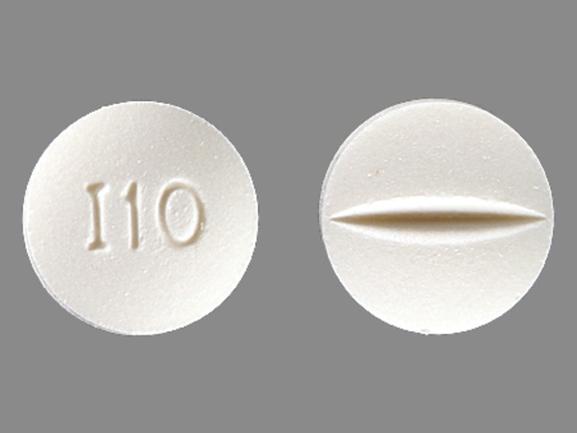Isoxsuprine
Medically reviewed by Drugs.com. Last updated on Feb 3, 2025.
Pronunciation
(eye SOKS syoo preen)
Index Terms
- Isoxsuprine HCl
- Isoxsuprine Hydrochloride
- Vasodilan
Dosage Forms
Excipient information presented when available (limited, particularly for generics); consult specific product labeling.
Tablet, Oral, as hydrochloride:
Generic: 10 mg, 20 mg
Pharmacologic Category
- Vasodilator
Pharmacology
Isoxsuprine increases muscle blood flow, but skin blood flow is usually unaffected. Rather than increasing muscle blood flow by beta-receptor stimulation, isoxsuprine probably has a direct action on vascular smooth muscle. The generally accepted mechanism of action of isoxsuprine on the uterus is beta-adrenergic stimulation (Kaindl 1959; Samuels 1959).
Absorption
Rapid and complete (Samuels 1959)
Excretion
Urine (Kaindl 1959).
Time to Peak
Time to peak, serum: ~1 hour; serum concentrations maintained for at least 3 hours (Kaindl 1959)
Use: Labeled Indications
Cerebrovascular insufficiency: Relief of symptoms associated with cerebrovascular insufficiency.
Peripheral vascular diseases: Treatment of peripheral vascular diseases, such as arteriosclerosis obliterans, thromboangiitis obliterans (Buerger disease), and Raynaud disease.
Note: More appropriate therapies (medical or surgical) should be considered; efficacy of isoxsuprine in the treatment of these conditions has not been well established.
Contraindications
Arterial bleeding; use immediately postpartum
Dosing: Adult
Peripheral vascular disease or symptoms of cerebrovascular insufficiency: Oral: 10 to 20 mg 3 or 4 times daily
Dosing: Geriatric
Avoid use (Beers Criteria [AGS 2019]).
Storage
Store at room temperature.
Drug Interactions
There are no known significant interactions.
Adverse Reactions
The following adverse drug reactions and incidences are derived from product labeling unless otherwise specified.
Frequency not defined.
Cardiovascular: Chest pain, hypotension, tachycardia
Central nervous system: Dizziness
Dermatologic: Skin rash
Gastrointestinal: Abdominal distress, nausea, vomiting
Related/similar drugs
Warnings/Precautions
Concerns related to adverse effects:
• Rash: Severe rash has been reported; discontinue use if rash appears.
Pregnancy Considerations
Isoxsuprine crosses the placenta. Adverse effects (eg, hypocalcemia, hypoglycemia, hypotension, and ileus) requiring treatment have been observed in infants born to mothers who received isoxsuprine during pregnancy. Maternal and fetal tachycardia have occurred with use and pulmonary edema has been reported with maternal use of beta stimulants (Brazy 1979; Brazy 1981). Although isoxsuprine has been evaluated for the treatment of preterm labor, use for this indication is not currently recommended (ACOG 171 2016).
Patient Education
What is this drug used for?
• It is used to treat certain blood vessel problems.
• It may be given to you for other reasons. Talk with the doctor.
WARNING/CAUTION: Even though it may be rare, some people may have very bad and sometimes deadly side effects when taking a drug. Tell your doctor or get medical help right away if you have any of the following signs or symptoms that may be related to a very bad side effect:
• Signs of an allergic reaction, like rash; hives; itching; red, swollen, blistered, or peeling skin with or without fever; wheezing; tightness in the chest or throat; trouble breathing, swallowing, or talking; unusual hoarseness; or swelling of the mouth, face, lips, tongue, or throat.
Note: This is not a comprehensive list of all side effects. Talk to your doctor if you have questions.
Consumer Information Use and Disclaimer: This information should not be used to decide whether or not to take this medicine or any other medicine. Only the healthcare provider has the knowledge and training to decide which medicines are right for a specific patient. This information does not endorse any medicine as safe, effective, or approved for treating any patient or health condition. This is only a limited summary of general information about the medicine's uses from the patient education leaflet and is not intended to be comprehensive. This limited summary does NOT include all information available about the possible uses, directions, warnings, precautions, interactions, adverse effects, or risks that may apply to this medicine. This information is not intended to provide medical advice, diagnosis or treatment and does not replace information you receive from the healthcare provider. For a more detailed summary of information about the risks and benefits of using this medicine, please speak with your healthcare provider and review the entire patient education leaflet.
More about isoxsuprine
- Check interactions
- Compare alternatives
- Reviews (3)
- Drug images
- Side effects
- Drug class: peripheral vasodilators
Patient resources
Other brands
Professional resources
Related treatment guides
Further information
Always consult your healthcare provider to ensure the information displayed on this page applies to your personal circumstances.

